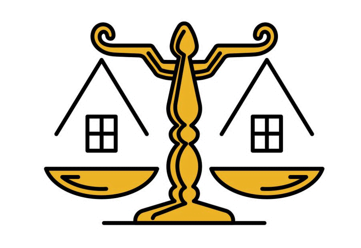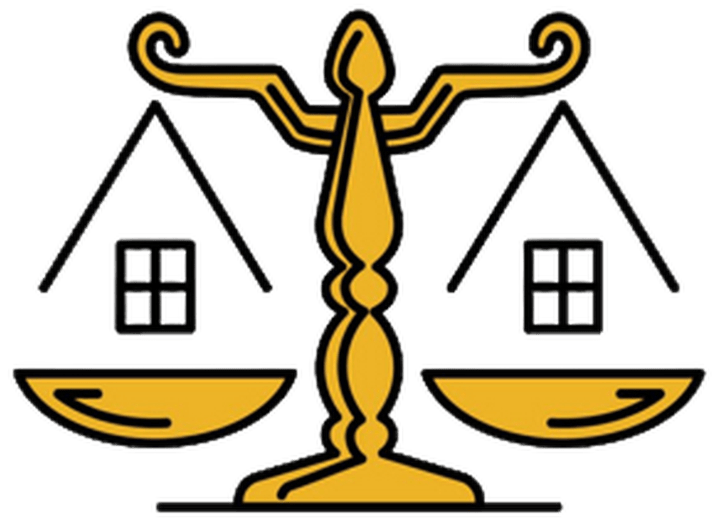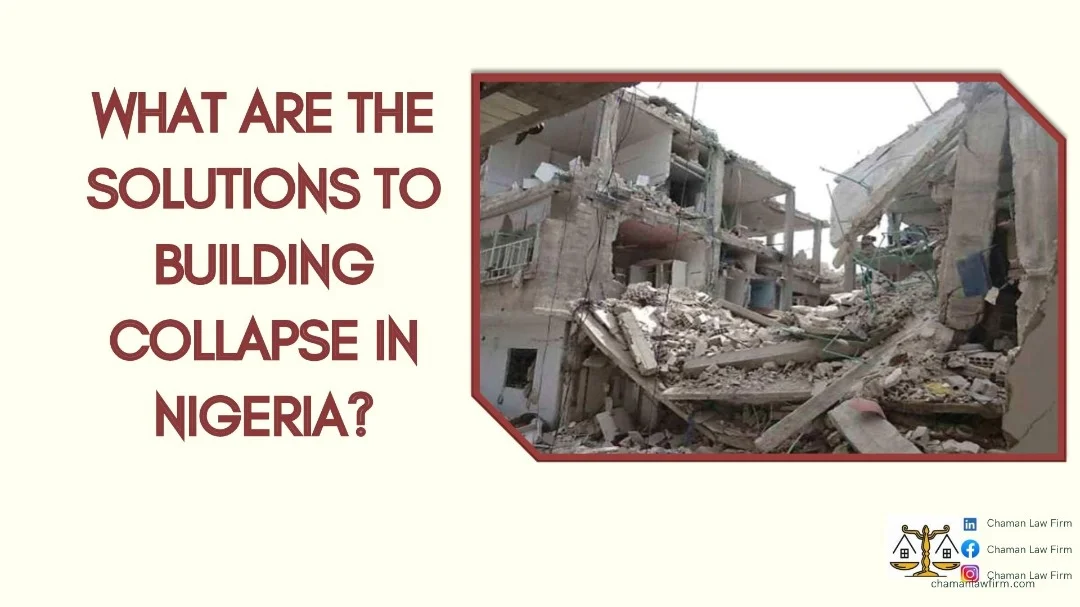What is the Solution to Building Collapse Incidences in Nigeria?
Introduction
Building collapse is a persistent challenge in Nigeria, leading to loss of lives, destruction of properties, and economic setbacks. These incidents occur due to multiple factors, including poor construction practices, substandard materials, regulatory failures, corruption, and lack of proper maintenance. Addressing building collapses requires a multi-faceted approach involving legal, engineering, regulatory, and societal reforms.
This article explores the root causes of building collapse in Nigeria and presents comprehensive solutions to mitigate the problem, ensuring a safer and more resilient built environment.
Understanding the Causes of Building Collapse in Nigeria
Before addressing solutions, it is crucial to understand the main causes of building collapse in Nigeria. The major factors include:
Use of Substandard Materials: Many developers and contractors use low-quality materials to cut costs, leading to weak structures prone to collapse.
Poor Construction Practices: Lack of adherence to standard building procedures, such as improper mixing of concrete, inadequate foundation depth, and weak reinforcements, contributes to structural failure.
Lack of Proper Supervision: Many construction projects are undertaken without proper oversight by qualified engineers, leading to deviations from approved designs and specifications.
Regulatory Failures and Corruption: Weak enforcement of building codes, bribery, and lack of accountability among regulatory agencies result in unchecked construction malpractices.
Overloading and Unauthorized Modifications: Many buildings collapse due to excessive modifications, additional floors beyond design capacity, and improper load distribution.
Aging and Poor Maintenance: Old buildings that are not properly maintained develop structural defects, which eventually lead to collapse.
Environmental Factors: Heavy rains, flooding, soil erosion, and earthquakes (though rare in Nigeria) can weaken building structures.
Quackery and Incompetence: The presence of unqualified builders, contractors, and engineers in the construction industry increases the likelihood of structural failures.
Legal and Regulatory Solutions
1. Strict Enforcement of Building Codes and Regulations
Nigeria has building regulations, such as the National Building Code (NBC), but weak enforcement leads to non-compliance. Solutions include:
Strengthening the regulatory framework and ensuring compliance with the NBC.
Establishing independent monitoring agencies to check compliance.
Implementing severe penalties for developers and contractors who violate building regulations.
2. Mandatory Building Permits and Approvals
No construction should commence without proper permits and approvals from relevant authorities.
Local government councils must ensure that developers follow due process before granting approvals.
3. Regular Inspection of Construction Sites
Government agencies should conduct frequent inspections of construction projects to ensure compliance.
Inspections should cover foundation depth, material quality, reinforcement strength, and adherence to approved designs.
4. Transparency and Anti-Corruption Measures
Corruption in building regulation agencies should be tackled through strict oversight and whistleblower protections.
Independent bodies should monitor construction projects to prevent bribery and cover-ups.
5. Legal Actions Against Offenders
Developers, contractors, and government officials involved in building collapses should face legal consequences.
Legal reforms should ensure swift prosecution and enforceable penalties for negligence and regulatory violations.
Engineering and Technical Solutions
6. Use of Standardized Building Materials
The government should regulate the sale of construction materials to prevent the distribution of substandard products.
Establish quality control measures to certify and approve materials before they are used in construction.
7. Improved Construction Techniques
Adoption of modern construction technology, such as prefabricated building materials and advanced structural engineering techniques, to enhance safety.
Strict adherence to proper concrete mixing ratios and reinforcement placement.
8. Strengthening of Building Foundations
Proper soil testing should be conducted before construction to determine foundation suitability.
Foundations should be designed to accommodate load-bearing capacity and environmental conditions.
9. Training and Certification of Construction Professionals
Only certified engineers, architects, and builders should be allowed to oversee construction projects.
Regular training programs should be conducted to keep professionals updated on best practices and new construction technologies.
10. Building Collapse Risk Assessments
Before any major construction project begins, a thorough risk assessment should be carried out to identify potential structural weaknesses.
Risk assessments should also be conducted periodically on existing structures.
Government and Policy Solutions
11. Implementation of National Housing Policies
The government should develop policies that prioritize safe and affordable housing while ensuring adherence to building standards.
Incentives should be provided for developers who construct safe and compliant buildings.
12. Public Awareness and Education
Campaigns should be conducted to educate the public on the dangers of substandard construction practices.
Homeowners should be educated on proper maintenance practices to prevent structural failures.
13. Disaster Management and Emergency Response
Establishment of rapid response teams to handle building collapse emergencies.
Creation of an effective building collapse database to track incidents and analyze causes for policy adjustments.
14. Encouraging Research and Innovation
Collaboration between universities, research institutes, and the construction industry to develop innovative solutions for building safety.
Government funding for research into climate-resilient construction methods.
Societal and Ethical Solutions
15. Ethical Responsibility Among Construction Stakeholders
Developers, contractors, and engineers must uphold ethical standards and avoid cutting corners.
Professional bodies should enforce codes of conduct and sanction unethical practices.
16. Community Involvement and Vigilance
Communities should be encouraged to report suspicious construction activities.
Establishment of community-based monitoring groups to oversee local building projects.
17. Corporate Social Responsibility (CSR) Initiatives
Private companies should invest in safe housing initiatives as part of their CSR programs.
Collaboration between government and private firms to improve construction safety standards.
Case Studies of Successful Building Safety Measures
1. Singapore’s Strict Building Regulations
Singapore has one of the strictest building regulatory systems in the world.
The country enforces stringent building codes, frequent inspections, and harsh penalties for violations.
2. Japan’s Earthquake-Resistant Construction Practices
Japan invests heavily in research and development to create earthquake-resistant buildings.
The government mandates strict compliance with construction safety laws.
3. Rwanda’s Construction Industry Reforms
Rwanda has reformed its building sector by enforcing quality control and licensing regulations.
Strict government oversight has significantly reduced building collapses.
These countries provide valuable lessons that Nigeria can adopt to improve its building safety measures.
Conclusion
Building collapse incidents in Nigeria are preventable through comprehensive legal, technical, regulatory, and societal reforms. By enforcing strict building regulations, ensuring the use of quality materials, improving oversight, and promoting ethical practices, the country can significantly reduce structural failures.
A collective effort from the government, private sector, professional bodies, and the general public is essential in ensuring safer buildings and protecting lives and properties. Stakeholders must take proactive measures to address the root causes and implement long-term solutions for a sustainable built environment in Nigeria.
Contact Us
Building collapse remains a major challenge in Nigeria, leading to loss of lives, property damage, and economic setbacks. Poor construction practices, use of substandard materials, weak regulatory enforcement, and lack of professional supervision have all contributed to these tragedies. The good news is that building collapse can be prevented with the right measures and legal compliance.
📞Phone: 08065553671, 08096888818
✉ Email: chamanlawfirm@gmail.com
📍 Address: 115, Obafemi Awolowo Way, Allen Junction, Ikeja, Lagos, Nigeria
🌍Click here to learn more about Chaman Law Firm
🔹 Let’s Work Together to Prevent Building Collapses and Create Safer Cities in Nigeria. Take Action Today! 🔹


